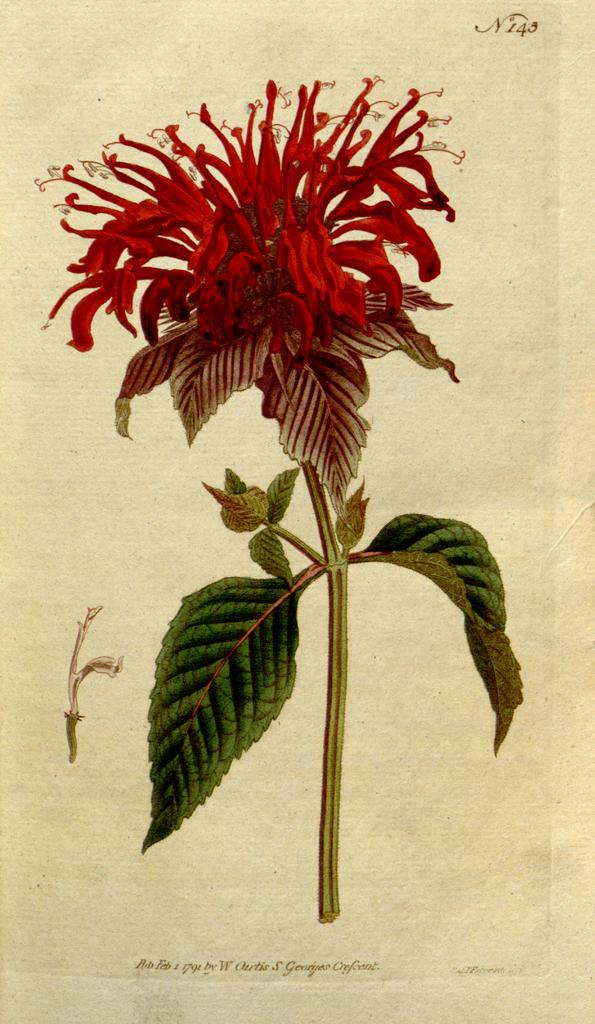The bergamont herbs are perennial plants native to North America and are members of the mint family Lamiaceae. The blossoms, appearing
in dense clusters stem terminal, last from July through September and make the plant an attractive addition to gardens. Members of the bergamont family come in a variety of colors – red, purple, or white. They can also have dark purple dots on the lower lips of their corollas. The individual flowers are tubular which is perfect for hummingbirds while bees and butterflies attract as well.
Bergamont varieties have been valued for ornamental, culinary, and medicinal uses. The leaves appear very much like the leaves of mint. The edges of the leaves are serrated. The main difference being that wild bergamont leaves are longer than their minty cousins. The leaves are lanceolate or ovate. They are 2 to 3 inches long and 1 to 2 inches wide. Leaves are light green and grow opposite each other on the stem (every leaf will have a twin opposite it on the stem. The stems are square shaped (as are the stems of all members of the mint family) and if you cut the stem, you will see that the stem is hollow. It has its relatives’ shallow, dense root system.
Red bergamont is also known as “bee balm” and was once known as Oswego tea. Wild
bergamont (most common one) is a perennial herb native to the eastern United States.
The plant reaches a height of about one meter and has a wider geographical distribution than other Monarda species. Wild bergamont (Monarda fistulosa) and Bee Balm (Monarda didyma) are in the same genus, but they are different species in the same family. They look similar and can be grown side by side, but they are not the same plant. Many people mistakenly refer to wild bergamont (Horsemint) as Bee Balm which has the scent of oranges. They also have common names like Scarlet Monarda, Lemon Bee Balm, and Lemon
Bergamont (Monarda citriodora ).






